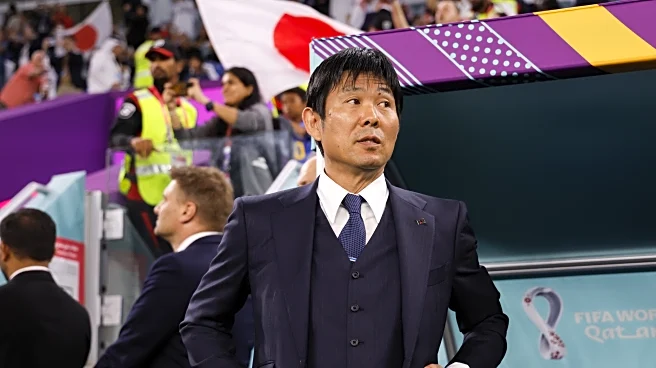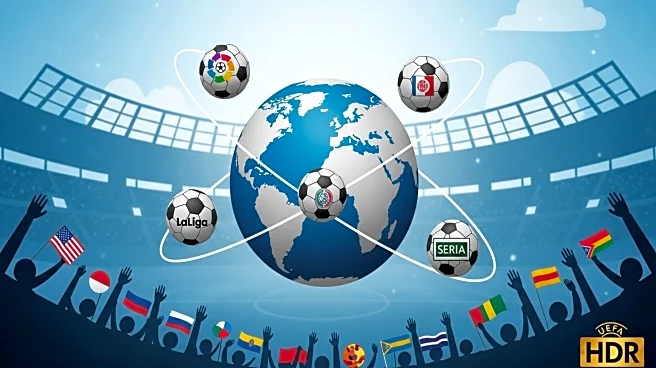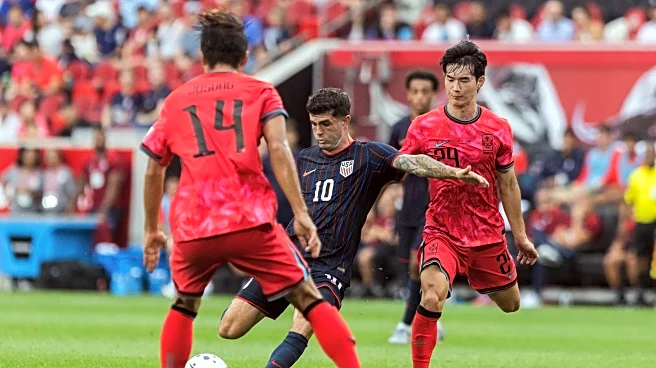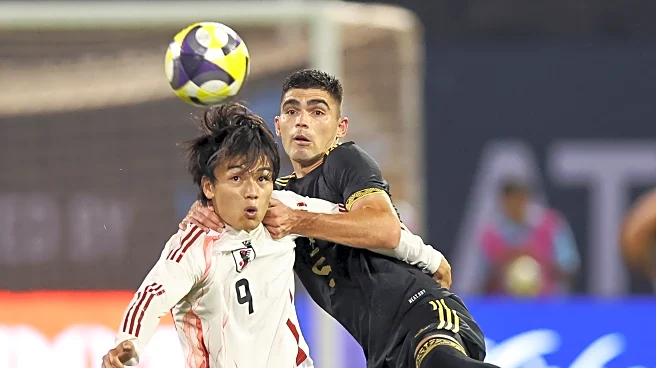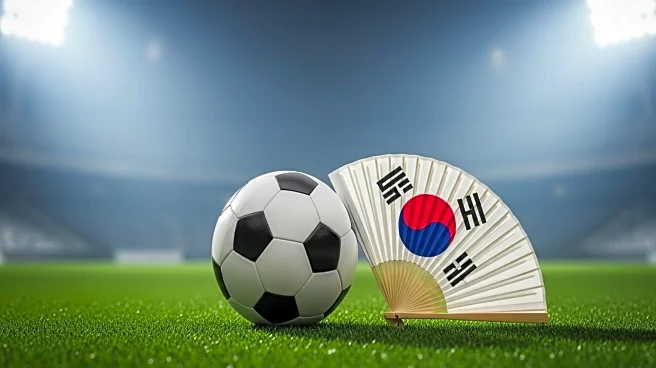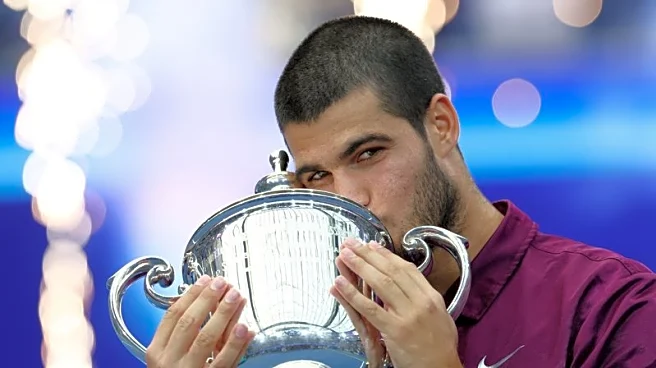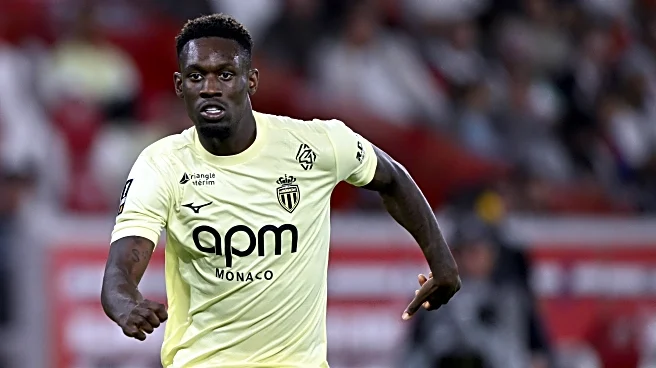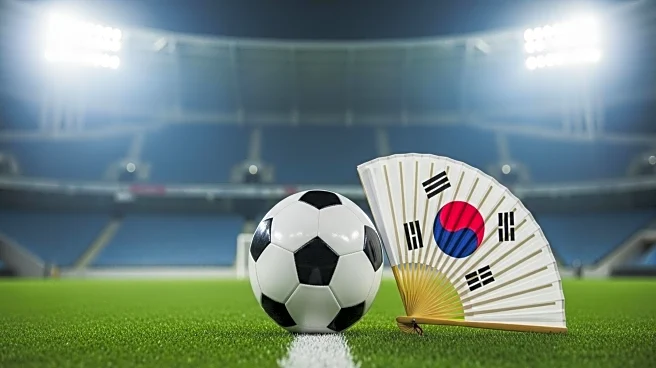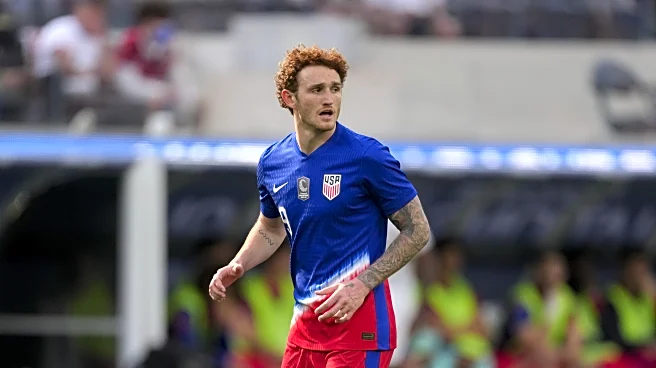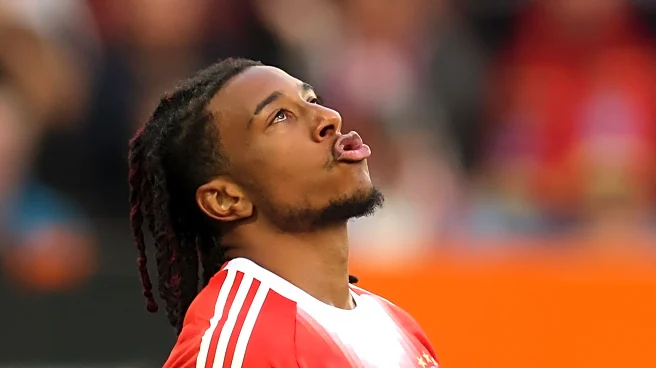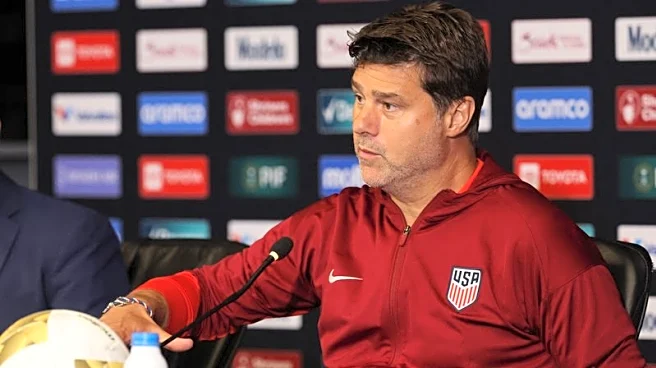
The United States Men’s National Team opened the international window with a defeat against South Korea (0-2). Japan is next on the schedule, providing another quality challenge with the clock ticking down toward the World Cup. The Asian power supplies a somewhat unique test, with the program having already secured a spot in next year’s tournament and seeking to improve on reaching the Round of 16
four times. The match is set for Snapdragon Stadium, a 35,000-seat multipurpose venue located in San Diego, California with a natural Latitude 36 Bermudagrass surface. This is the fourth all-time meeting between the two sides, with the USMNT holding a 1-2-0 record and falling in the most recent fixture, a 2022 friendly (0-2). Ranked 17th internationally by FIFA, Japan secured a spot at the World Cup with a first-place finish atop Group C in the Asian Football Confederation’s third round of qualifying, rolling with a one-loss campaign against Australia (1-1, 0-1), Saudi Arabia (2-0, 0-0), Indonesia (4-0, 6-0), Bahrain (5-0, 2-0), and China (7-0, 3-1). サムライ・ブルー (Samurai Blue) claimed the title at the summer’s East Asian Football Federation E-1 Football Championship with victories over Hong Kong (6-1), China (2-0), and South Korea (1-0). Saturday’s exhibition with Mexico ended in a draw (0-0).
In 2017, Hajime Moriyasu was initially named to lead the Olympic squad before being appointed to the senior team manager position in the following summer. His impressive performance at the 2022 World Cup saw Japan defeat Germany and Spain before falling to eventual runners-up Croatia in a penalty shootout in the Round of 16. The federation “had considered alternatives, including a foreign coach,” but his retention through the 2026 edition of the tournament was a “unanimous” decision. The 57-year-old former midfielder earned 35 caps for his country before enjoying a successful stint in the technical box at Sanfrecce Hiroshima that included three domestic titles and Super Cups apiece.
Moriyasu initially named a 25-player roster for the international window. The domestic J1 League is home to six of the call-ups, while the remaining 21 talents are on the books at various European clubs. Notable absences include Ao Tanaka, Kyōgo Furuhashi, Hiroki Itō, Keito Nakamura, Kōki Machida, Shogo Taniguchi, and Hidemasa Morita. Tomoya Ando withdrew due to an injury, while Daichi Kamada, Kodai Sano, and Yukinari Sugawara were late additions.
***
GOALKEEPERS (3): Zion Suzuki (Parma), Keisuke Ōsako (Sanfrecce Hiroshima), Tomoki Hayakawa (Kashima Antlers)
DEFENDERS (7): Yūto Nagatomo (FC Tokyo), Kō Itakura (Ajax), Ayumu Seko (Le Havre), Tsuyoshi Watanabe (Feyenoord), Hayato Araki (Sanfrecce Hiroshima), Hiroki Sekine (Reims), Yukinari Sugawara
MIDFIELDERS (11): Wataru Endo (Liverpool), Takumi Minamino (Monaco), Junya Itō (Genk), Ritsu Dōan (Eintracht Frankfurt), Takefusa Kubo (Real Sociedad), Kaoru Mitoma (Brighton & Hove Albion), Kaishu Sano (Mainz 05), Joel Chima Fujita (FC St. Pauli), Henry Heroki Mochizuki (Machida Zelvia), Daichi Kamada (Crystal Palace), Kodai Sano (NEC Nijmegen)
FORWARDS (6): Ayase Ueda (Feyenoord), Daizen Maeda (Celtic), Mao Hosoya (Kashiwa Reysol), Kōki Ogawa (NEC Nijmegen), Shūto Machino (Borussia Mönchengladbach), Yuito Suzuki (SC Freiburg)
***
Moriyasu has overcome criticism for his “perceived overly conservative tactics,” instead shifting between three- and four-player formations (primarily a 3-4-2-1) and seeking to “slot in as many attackers as possible.” His holistic style prioritizes “discipline, technical precision, and a strong team ethic” with “ball possession and quick transitions.” Against stronger opponents, the manager relies on two-way players with a focus on defending, dropping a holding midfielder between the centre-backs. There is an “increased” burden on the wide players who can sometimes be kept out of the attack if the squad is forced into a vertical strategy.

While the likelihood of Zion Suzuki committing to the USMNT appeared relatively low, there is perhaps some rueful sentiment at watching the New Jersey-born talent assume the number-one role for club and country. The 23-year-old Parma goalkeeper successfully avoided relegation after I Crociati (The Crusaders) returned to Serie A, with some of the world’s biggest clubs reportedly looking to make an approach. Standing at a rangy six feet, three inches tall, he is a highly athletic shot stopper with excellent mobility, reaction time, and improvisation, displayed when adapting to unexpected deflections and readjusting for close-range rebounds. While mostly staying to his area, corralling crosses is a strength along with constant activity in the build-up that includes frequent passes that travel more than 40 yards.
Kō Itakura was a key piece in Borussia Mönchengladbach’s rise but was sold over the summer to Ajax with a declining contract, taking his “tactical discipline,” versatility, and high number of successful passes. He plays quickly, excels at bypassing multiple lines with his lofted distribution, and makes timely interventions without fouling, particularly when sliding into challenges or clipping away the ball during the opponent’s counters. Ayumu Seko began picking up more rotations at the end of qualifying, with three starts and one substitute appearance in the final five fixtures, coinciding with a move from Grasshopper to the more competitive confines of Ligue 1. The 25-year-old Le Havre centre-back twists and turns out of trouble with aplomb and has a knack for arriving at dangerous moments with a tackle that avoids dangerous contact. Tsuyoshi Watanabe had a hot start to his Feyenoord tenure by immediately assuming a place in the starting lineup and netting a brace in a Champions League loss to Fenerbahçe. Strong in the air and a general nuisance on the ground, his best quality is the ability to eat up space and impede the opponent by tracking down the direction of the ball, positioning himself well for blocks. Hiroki Sekine of Reims picked up his first cap in the 1-0 loss to Australia, slotting into a fullback role for his club but playing on the outside of the three-player line for Japan. Target Scouting points to his good size at six feet, one inch tall, while also being “rarely beaten if isolated in the one-versus-one” and capable of making “very dangerous deliveries.”
Liverpool’s Wataru Endō was mainly a rotational substitute during the Premier League-winning season but often acts as captain for his country, covering the area ahead of the back line with rigid positional discipline. He can also drop into a centre-back role yet is best served using his “energy and engine in a high-intensity style” in the engine room, throwing himself into challenges and winning headers with regularity. Kaishu Sano picked up two starts at the end of qualifying, thriving in a “high-intensity game” with hard work and an unyielding motor that enable him to display a “tough-tackling nature.” The 24-year-old Mainz midfielder wins more than his fair share of headers and is disruptive of the opponent’s passing lanes and attempted shots, maintaining “shape and control” with “terrific instincts.” Joel Chima Fujita of FC St. Pauli can line up in the six and eight roles, serving as “an energetic, industrious, and tenacious shield in front of the defense,” showing “clarity in his play” and “a good feel for the space.” The Tokyoite buzzes into the dangerous areas, pings a variety of one- and two-touch distribution, and makes the occasional foray into the attacking zones with a late run and an attempt on net.
A “unicorn in the attack,” Kaoru Mitoma ended last season with 11 goals and four assists for Brighton & Hove Albion, overcoming persistent injury issues. He is a “dynamic player” with “a heavy focus on beating his man one-on-one” and “the ability to go inside or out,” boasting a high level of technical ability and intensity in the defensive side of the game. On the other side of the formation, Ritsu Dōan has “a magic left foot” and “a low center of gravity,” which is useful as a “formidable dribbler” or when “throwing [himself] into challenges.” The 27-year-old SC Eintracht Frankfurt winger is a versatile option who advances with solo progressions and creates space in the final third through disorienting runs that pull opponents out of position or draw fouls. Coursing through the center and the wings, Genk’s Junya Itō provides a dose of creativity and electricity, dipping and darting through the lines before attempting to find his teammates with incisive passes. With “exquisite skill on the ball” and a solid work rate, the established veteran continues to make an impact whether serving as a facilitator or the expert lock picker. Daizen Maeda is coming off an unbelievable season with Celtic that saw him contribute 33 goals and 12 assists in 51 appearances across all competitions, being named the PFA Scotland Players’ Player of the Year. Seeking to push the tempo, Moriyasu notes his pressing, pace, and verticality, with his ability to “create a flow” becoming a necessity “as the level of Japan’s opponents increases.” A last-second inclusion, the “fast-paced” Yukinari Sugawara makes the occasional start and recently departed Southampton for a loan with an option to buy at Werder Bremen, getting his feet wet by going the full 90 minutes in a 3-3 draw with Bayer Leverkusen. Breaking the Lines praises him as “confident and comfortable” when receiving play and “dominating the right flank” with “testing” distribution into the box as well as stepping into the role of set piece taker.
Monaco’s Takumi Minamino “has the vision to find his teammates quite often with dangerous line-breaking passes” and is hard-working on the defensive side of the game with a respectable number of tackles and clearances. He can operate on the inside or the outside of the field, whether using his skill to wind around multiple opponents or his speed to break into open space and move toward the goal. The “phenom” Takefusa Kubo has largely lived up to his early promise and developed into a solid professional with “quick feet and sensational dribbling and change of pace,” progressing into the wings. The 24-year-old Real Sociedad attacker can line up on either side but is perhaps at his best when taking the inverted role on the right and slaloming toward the center in order to slip a pass or drill a left-footed shot. Yuito Suzuki recently made the jump from Brøndby to SC Freiburg, heralded as an “agile playmaker who seemingly glides across the pitch and jinks past opponents with the drop of a shoulder.” The multi-use weapon has the “pace and stamina to win [possession] back for his team” and makes smart movements off the ball, connecting the entire formation through effort and will. Daichi Kamada was a late addition to the roster, having returned from injury at Crystal Palace and seeking to resume his productive form from qualifying that included four goals and an assist. His “technical ability suits the advanced role,” with significant amounts of time spent in possession, cleverly plotted inroads into the box, and a clinical eye for the corner of the net.
Ayase Ueda was a near goal-per-game finisher for Japan in 2023 and 2024 but also served as “a valuable linking point” when fighting to regain possession or linking up with teammates in “quick combinations.” The 27-year-old Feyenoord forward has scored at a less than desired rate at the club level while dealing with several injuries last season but can still be relied upon for his accurate passing and success in duels. He covers the length and width of the field and employs all manner of creative touches in order to evade defensive pressure or deflect to an open option in a crowded box. His finishing is the standard mix of poaching, driven medium-range shooting, and target play, displaying excellent leaping ability and positional sense when beating opposing centre-backs for crosses. NEC Nijmegen’s Kōki Ogawa returns to camp for the first time since November of 2024, a welcome homecoming after his hot six-goal start to qualifying as a fill-in option. Standing around six feet, one inch tall, the late bloomer has the “aerial prowess [of a] behemoth” but is “hardly a lumbering sort,” gliding into various zones in order to claim possession and displaying agility in the box. Shūto Machino of Borussia Mönchengladbach is a versatile attacking asset with a “strong physical presence and a willingness to press,” get involved in the build-up, and drop deep in order to receive. Capable of reading situations and breaking down a box, Total Football Analysis describes him as a “complete player who adds flexibility” and converts from a smaller number of chances.
Between the CONCACAF Nations League Finals and Gold Cup, the USMNT could use a result that sends an optimistic message and indicates that the program is heading in the right direction. However, Japan is a more than capable opponent, featuring players who are competing at clubs in some of the world’s top leagues. The months will go by quickly, and each passing fixture is one of the remaining chances for coaches to make the necessary preparations.
The match is scheduled for Tuesday, September 9th at 7:30 p.m. Eastern, 4:30 p.m. Pacific. Viewing options include TNT, HBO Max, Universo, Peacock, and FuboTV (free trial).
